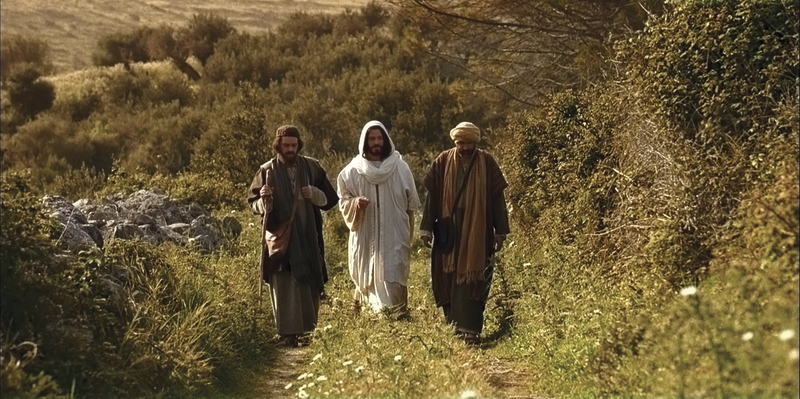On the 21st of march, 2021, Linda Gradstein wrote in the Jerusalem Post
“Pilgrims can walk the new 18-km. (11-mile) Emmaus Trail that now goes from the Saxum Visitor Center in Abu Ghosh, which hat exhibits on Christianity, and ends at the monastery of Emmaus Nicopolis.”
The important event that took place on the Road to Emmaus is reported fully only in Luke 24.13-35. These verses record Jesus appearing to two of his disciples while they were going to a place called Emmaus. One was called Cleopas and the other is unnamed.
The fact that on their return to Jerusalem, the two disciples told the eleven (or ‘the rest’ as they are called in Mark 16.13) that “he was known of them in breaking of bread”, shows what a significant occasion it was. It was the first time after the Last Supper that Jesus broke bread again.
From their conversation we learn that those two disciples did not understand why Jesus had to die. We read that “they talked together of all these things which had happened. And it came to pass, that, while they communed together and reasoned …” (Luke 24.14,15). They were quite perplexed and when Jesus joined them, he asked them what they were talking about. Cleopas told him what had happened to Jesus in Jerusalem. These two disciples knew the sequence of the events very well, but they did not believe them and had walked away from Jerusalem. After Jesus opened the Scriptures to them, “their heart burned within them”.
Is it important to understand why the first breaking of bread in which Jesus participated after he was raised from the dead, had to take place near a village called Emmaus? And where was Emmaus[1]? Why is that important to know? One thing that I have learnt from following the journeys of Jesus is that he always went to places for a reason, usually to fulfil an Old Testament prophecy.
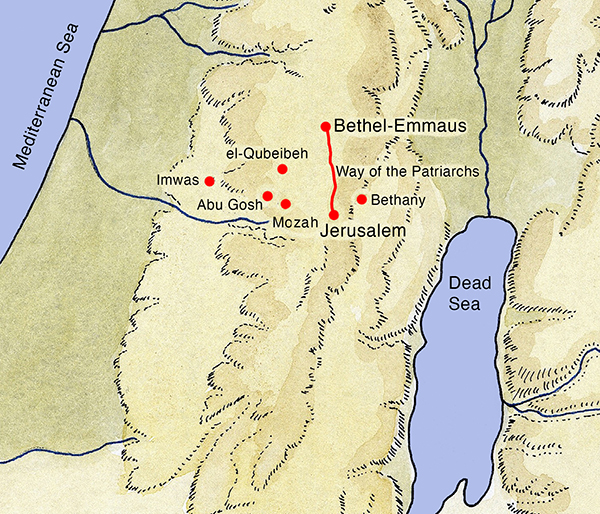
We are told that Emmaus was about 60 stadia[2] (Luke 24.13) from Jerusalem, that is over 4 times as far as Bethany, which was 15 stadia (2.775 km, 1.72 miles) from Jerusalem (John 11.18). As I have lived for two years in Bethany, I know this measurement to be true, as it took me just over half an hour to walk from the back of the Mount of Olives to the Temple Mount Excavations. Emmaus should be located therefore some 11 kms or 7 miles from Jerusalem. But in which direction did Jesus go? North, south, east or west? We are not told.
The name Emmaus does not occur anywhere in the Old Testament. However, in one of the New Testament manuscripts, the Codex Bezae Cantabrigiensis[3], as pointed out by Read-Heimerdinger and Rius-Camps, Emmaus is called Oulammaous[4]. Another ancient source also refers to these names[5]. This is because of an association that was made by some of the early translators with the name of the place where Jacob had a dream after he left his family to go to Padanaram.
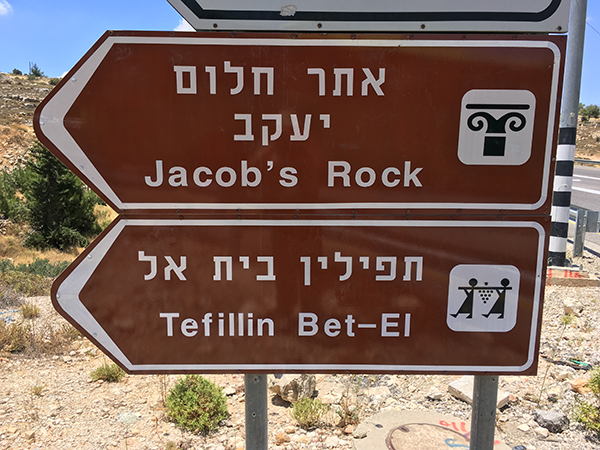
This first place where Jacob stopped overnight he called Bethel, which means the House of God:
“And he called the name of that place Bethel: but the name of that city was called Luz at the first”. (Gen. 28:19)
The word order in Hebrew is different:
“And he called the name of that place Bethel: but Luz was the name of the place at first”.
In the Hebrew text, “but Luz” is “Oulamlouz”, and this became Oulammaous in this manuscript, from which comes Ammaus by changing the “L” to an “M. (Emmaus is the Latin translation).
If Emmaus and Bethel are essentially the same place, then there are amazing parallels between Jacob’s stay in Bethel and Jesus going to Emmaus with the two disciples.

Some questions still remain to be answered. When the two disciples returned to Jerusalem, they said, “The Lord is risen indeed, and hath appeared to Simon.” (Luke 24:34)
How did they know that? And who was Cleopas? If the name of Bethel had been obscured, then maybe the name of Cleopas also stood for somebody else. I believe he was Peter, for Cleopas (if you take out the letter ‘L’, as with Oulamaous) sounds very much like Cephas, unto whom we know that Jesus appeared before the other disciples. In the gospels we read that after his resurrection Jesus appeared unto Mary Magdalene first, but it is also written in 1Cor. 15:4,5 that “Jesus was buried, and that he rose again the third day according to the scriptures: and that he was seen of Cephas, then of the twelve”.
In this Lucan account, Peter’s identity is hidden, reflecting perhaps the fact that his eyes were restrained. Jesus had earlier changed Peter’s name to Cephas when he made that good confession that Jesus was the Son of living God. This confession became the foundation stone on which the church is built. Jesus had called him also Simon son of Jonah[6], which means “hearer, son of a dove” – a dove is type of the Holy Spirit. Listening to Jesus’ explanation of why he had to suffer and die, and believing after Jesus had broken bread, made him a true hearer.
So, if Cleopas is indeed Cephas, then Jesus indeed first appeared to Peter before the other disciples, and if that is so, then how great is the forgiveness and mercy of Jesus toward the disciple who had betrayed him!
There may be other reasons why the name of Bethel does not appear in the New Testament and that the Canaanite name of Luz (Gen. 28:19) for Bethel was used instead. First of all, Bethel in Hebrew means the House of God, which at that time was understood to be the Temple in Jerusalem.
The second reason may be that the people of this place were ashamed of their connection with the temple that Jeroboam had built for the worship of Baal, who was often portrayed as a bull (1 Kings 12:26-33)[7]. When some Baal-worshipping youths[8] returned from Bethel to Jericho, they met Elisha and mocked him. Elisha then cursed them in the name of Yahweh, as this meeting had become a confrontation between the worship of Yahweh and that of Baal. Elisha was vindicated when, by divine intervention, two she bears mauled these idol worshippers. The people of Bethel may have wanted to disassociate themselves from their shameful past.
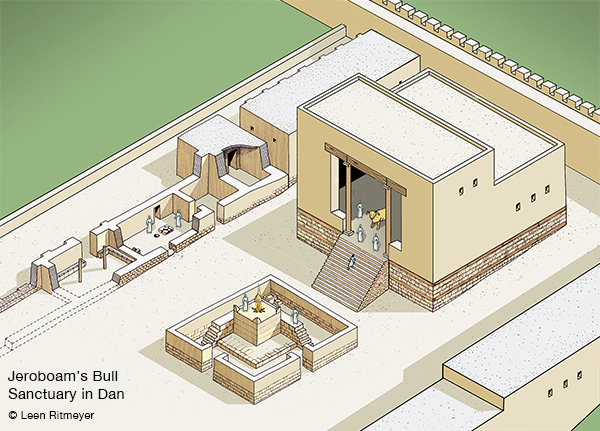
In this reconstruction drawing, we see the complete temple for the golden calf in the centre of the courtyard, with a stairway leading up to it. In front of the temple was an altar, while other rooms were arranged around the sanctuary.
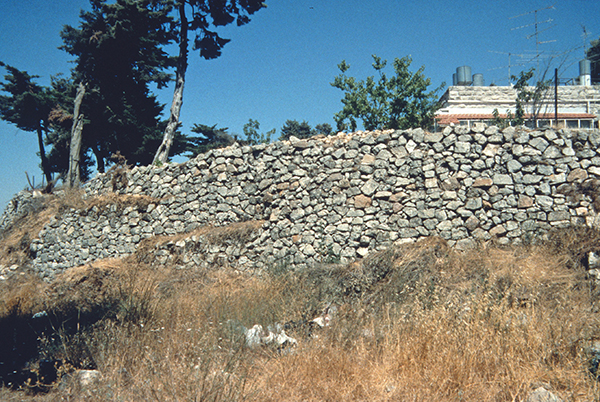
It also makes sense that Emmaus would have been located on the Way of the Patriarchs, on which Abraham, Jacob and Joseph had travelled. This ridge road connects places, such as Beersheba, Hebron, Bethlehem, Jerusalem, Bethel, Shiloh and Shechem, where some of the most important events in Scripture took place.
[1] Several candidates for identification with Emmaus have been suggested, e.g. Mozah (Qaloniyeh), Abu Gosh (Castellum), el-Qubeibeh and Imwas (Emmaus-Nicopolis). None of these places, however, have a relevant historical connection to the site under consideration.
[2] One Roman stadium is about 185 m.
[3] This manuscript is held at the University of Cambridge: https://cudl.lib.cam.ac.uk/view/MS-NN-00002-00041/1
[4] Read-Heimerdinger, J. and Rius-Camps, J., “Emmaus or Oulammaous? Luke’s Use of the Jewish Scriptures in the Text of Luke 24 in Codex Bezae”, Revista Catalana de Teologia (RCatT) 27 (2002), pp. 23-43.
[5] Eusebius of Caesarea, in Onomasticon 40.20 writes, “Baithel (Bethel) is now a village twelve miles from Ailia (Jerusalem) to the right of the road going to Neapolis (Shechem). It was formerly called Oulamma and also Luza. It was given to the lot of the tribe of Benjamin, near Bethaun (Bethaven) and Gai (Ai). Josue (Joshua) also fought there killing the king.”
[6] Matthew 16:17.
[7] The site of Ras et-Tahunah at al-Bireh is an elevated hill, which has been tentatively identified as the high place of Bethel.
[8] These youths were not little children. The Hebrew na’arim ketanim indicates young people, not little children. Abraham’s 318 young men that defeated the armies of Chedorlaomer and his allies, were also called na’arim (Gen. 14:24). When Solomon became king at the age of 40, he asked God for wisdom as he said that he was but a “little child” (na’ar katan), the same Hebrew words that were used to described the youths in 2 Kings 2:23,24.

